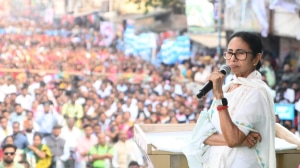Add seats for 33 pc women’s quota: UPA
The issue of reservation for women has taken a fresh turn with the UPA government proposing that 33 per cent seats be added in state legisla...

The issue of reservation for women has taken a fresh turn with the UPA government proposing that 33 per cent seats be added in state legislatures and Parliament instead of creating a quota within the existing number. Home Minister Shivraj Patil has sent a note to leaders of all parties to build a consensus on the issue.
A Bill providing for 33 per cent reservation for women in Parliament and legislatures was first introduced in Parliament in June, 1996, by the United Front Government headed by H.D. Deve Gowda. However, it could not be passed due to differences among various parties. An attempt to table it during the Vajpayee regime in May 2003 was stalled by opposition parties, particularly the Samajwadi Party and the RJD, which demanded quotas for minorities, OBCs and Dalits within the share reserved for women.
The proposal provides for increasing the combined strength of Parliament and state legislatures from some 6,000 to about 8,000. In order to cope with more MPs, Patil has suggested that the Lok Sabha can be shifted to the Central Hall and the Rajya Sabha to the Lok Sabha chamber. The Central hall activities can be carried on in the adjacent library or a new structure. The Rajya Sabha chamber can be used by MPs or it can be given to the government for use as the Cabinet room.
Patil has addressed several possible objections to the proposal in his note. The foremost, the increased burden on the exchequer, according to him, would be justified as the measure is designed to do justice to women in political field. He has argued that there would be no paucity of female candidates when the country has ‘‘one million members of district bodies, taluka and local bodies elected and working at present’’.
The BJP has convened a meeting of r leaders tomorrow to discuss the issue.



- 01
- 02
- 03
- 04
- 05




























